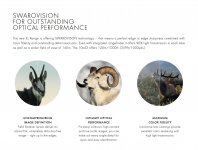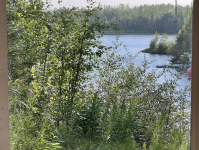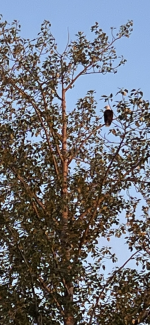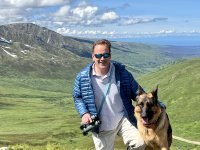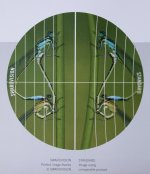dwever
Well-known member
Yesterday I received the EL Range TA (Tracking Assistant) I ordered over the weekend and except for the price ($3,599) I am overwhelmingly pleased. Optically it is everything I had hoped for, really the optical equal of the EL 8.5x42. Maybe barely not quite as bright as the NL and certainly not the FOV, but everything you want in Alaska including the ability to read the temperature (the Zeiss RF's also read temperature but don't read it out), atmospheric pressure, and angle gently displayed in at 6:00 in the right barrel. There is an electronic compass for a tracking feature I'm unlikely to use. The pair on the far left are mine, the other pics of the EL RF bins are lifted from the internet.
Leading Binoculars With Glasses: When I was out this afternoon I noticed quickly these are the easiest binoculars to use with glasses I have ever used - very nice and pleasing surprise. I typically put contacts in if I’m going out to do some glassing.
No loss of light: I also noticed there was not a loss of light transmission in the electronic version of the EL's. Used to be in earlier generations, there was a light loss hooking up an internal integrated RF.
Focus is different but robust and effective: wow it is a long long turn from one end of the focus or to the other. And, going counter-clockwise is just slightly more resistance than focusing clockwise, but otherwise very smooth with zero slop. They do not snap to focus like an NL.
Everything I wanted for viewing nature which is it's number one job: Today at Lake Lucille, Wasilla we glassed wood ducks and a couple loons, just optically superb. No rolling ball for me, everything under control on the highly reflective water with clear skies in the sun directly overhead.
Dusk and Shadows: Sunset tonight at 11:46 PM in Big Lake, Alaska using the EL Range until 12:35 am into the extended dusk, and I confirmed perfectly bright for dusk shadow penetration. The natural image through the EL's was great. I'm also loving being able to hit the left thumb switch to take it to atmospheric data mode, and quickly see temperature (or barometric pressure).
My personal alpha journey and resulting frame-of-reference: I've read with awe the subject matter expertise some of the reviewers write with on this site. I'm just a user who know the image and detail I'm looking for. Warm colors and big FOV's are a bonus.
Background: I started with a pair of Zeiss Mariner 7X50 (pictured in my state police car) years ago; then I entered my Leica phase with 7x42 and 8x42 UVHD+ (pictured) for a safari (7X42's by far my favorite), Akugera, Rwanda National Park, and 8X42 Noctivids (pictured) which were great in Alaska but focus gummed up in the Alaska brutal cold; finally Swarovski NL Pure (pictured) 8X42 (optically breathtaking but would've liked a more robust build), and these. The EL Range stands toe to toe optically with anything I've had with the exception of the NL Pure which might have just a little more pleasing image with the FOV, warm colors, and a hair more transmission.
Perhaps the EL Range are the most robust civilian alphas since the Zeiss Marine 7X50's. For me being far more robust in their construction maybe on par with the indestructible Mariners, followed in build by the Noctivids and then the rest.
A word about the electronics:
First, most often I will use these as primary optics without any electronics except maybe to check in on the temperature. These are an awesome way to know during the day that your temperature is now -10 in the late afternoon instead of +15 when you got out there at noon. That information can be critical in Alaska.
Second, as primarily optics and not electronic instrument, water fowl, raptors, marine life, finding animals in the mountains for viewing with a scope are the primary purpose. These EL Range as strictly optics are fully up to the alpha game.
Third With the distance measurement going accurately out past a mile in yards, I would OMG love to have a reticle in the lens which would allow me to calculate size accurately from a female bald eagle to a gray whale. However, by slicing your FOV into fourths with exact distance from subject, you can still with some training do some decent size estimation, but hardly exact that a reticle would allow.
Fourth, in Swarovski's latest generation of RF's, they've done a wonderful job of having plenty of data displayed when needed, but completely turned off otherwise, but which springs back to life with the push of a button where your finger naturally lays. Beyond that, the electronics won't even be part of my equation unless I'm just checking in on the cold or using the angle indicator to help judge avalanche conditions. All the atmospheric and angle metrics are on board to predict bullet flight and give solutions for placing a bullet in an exact location, capabilities that I've not used as I've used RF's for over the years.
Fifth, The only thing left to report on is the binocular's electronic compass' tracking assistant and to what extent that might be helpful in navigation, but that report likely won't come from me.
A great set of optics.
Pictures: New EL Range TA; Internet picture; Internet picture with NL Pure and EL Range; Zeiss 7X50 in State Police car; Leica 8X42 UVHD+; Noctivids 8X42; NL Pure 8X42; Sea Lions on an island near the Southern Tip of Admirality Island, Alaska; Bird Rescue, Houston, Alaska near me; Six Wheeler Expedition (can-am 1,000's) interior; Gray Whale Resurrection Bay, Alaska; Flying from Admiralty Island to Sitka; Snow Noctivids;
Leading Binoculars With Glasses: When I was out this afternoon I noticed quickly these are the easiest binoculars to use with glasses I have ever used - very nice and pleasing surprise. I typically put contacts in if I’m going out to do some glassing.
No loss of light: I also noticed there was not a loss of light transmission in the electronic version of the EL's. Used to be in earlier generations, there was a light loss hooking up an internal integrated RF.
Focus is different but robust and effective: wow it is a long long turn from one end of the focus or to the other. And, going counter-clockwise is just slightly more resistance than focusing clockwise, but otherwise very smooth with zero slop. They do not snap to focus like an NL.
Everything I wanted for viewing nature which is it's number one job: Today at Lake Lucille, Wasilla we glassed wood ducks and a couple loons, just optically superb. No rolling ball for me, everything under control on the highly reflective water with clear skies in the sun directly overhead.
Dusk and Shadows: Sunset tonight at 11:46 PM in Big Lake, Alaska using the EL Range until 12:35 am into the extended dusk, and I confirmed perfectly bright for dusk shadow penetration. The natural image through the EL's was great. I'm also loving being able to hit the left thumb switch to take it to atmospheric data mode, and quickly see temperature (or barometric pressure).
My personal alpha journey and resulting frame-of-reference: I've read with awe the subject matter expertise some of the reviewers write with on this site. I'm just a user who know the image and detail I'm looking for. Warm colors and big FOV's are a bonus.
Background: I started with a pair of Zeiss Mariner 7X50 (pictured in my state police car) years ago; then I entered my Leica phase with 7x42 and 8x42 UVHD+ (pictured) for a safari (7X42's by far my favorite), Akugera, Rwanda National Park, and 8X42 Noctivids (pictured) which were great in Alaska but focus gummed up in the Alaska brutal cold; finally Swarovski NL Pure (pictured) 8X42 (optically breathtaking but would've liked a more robust build), and these. The EL Range stands toe to toe optically with anything I've had with the exception of the NL Pure which might have just a little more pleasing image with the FOV, warm colors, and a hair more transmission.
Perhaps the EL Range are the most robust civilian alphas since the Zeiss Marine 7X50's. For me being far more robust in their construction maybe on par with the indestructible Mariners, followed in build by the Noctivids and then the rest.
A word about the electronics:
First, most often I will use these as primary optics without any electronics except maybe to check in on the temperature. These are an awesome way to know during the day that your temperature is now -10 in the late afternoon instead of +15 when you got out there at noon. That information can be critical in Alaska.
Second, as primarily optics and not electronic instrument, water fowl, raptors, marine life, finding animals in the mountains for viewing with a scope are the primary purpose. These EL Range as strictly optics are fully up to the alpha game.
Third With the distance measurement going accurately out past a mile in yards, I would OMG love to have a reticle in the lens which would allow me to calculate size accurately from a female bald eagle to a gray whale. However, by slicing your FOV into fourths with exact distance from subject, you can still with some training do some decent size estimation, but hardly exact that a reticle would allow.
Fourth, in Swarovski's latest generation of RF's, they've done a wonderful job of having plenty of data displayed when needed, but completely turned off otherwise, but which springs back to life with the push of a button where your finger naturally lays. Beyond that, the electronics won't even be part of my equation unless I'm just checking in on the cold or using the angle indicator to help judge avalanche conditions. All the atmospheric and angle metrics are on board to predict bullet flight and give solutions for placing a bullet in an exact location, capabilities that I've not used as I've used RF's for over the years.
Fifth, The only thing left to report on is the binocular's electronic compass' tracking assistant and to what extent that might be helpful in navigation, but that report likely won't come from me.
A great set of optics.
Pictures: New EL Range TA; Internet picture; Internet picture with NL Pure and EL Range; Zeiss 7X50 in State Police car; Leica 8X42 UVHD+; Noctivids 8X42; NL Pure 8X42; Sea Lions on an island near the Southern Tip of Admirality Island, Alaska; Bird Rescue, Houston, Alaska near me; Six Wheeler Expedition (can-am 1,000's) interior; Gray Whale Resurrection Bay, Alaska; Flying from Admiralty Island to Sitka; Snow Noctivids;
Attachments
-
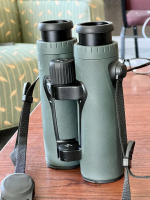 tempImage5CSbCo.png12.2 MB · Views: 44
tempImage5CSbCo.png12.2 MB · Views: 44 -
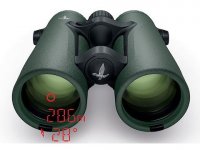 9203AABE-B0D2-4EF2-9772-D5D50C5CCB2E.jpeg40.7 KB · Views: 38
9203AABE-B0D2-4EF2-9772-D5D50C5CCB2E.jpeg40.7 KB · Views: 38 -
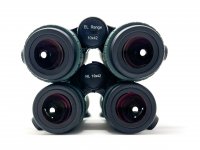 17432D41-13F0-4738-A45D-80E30DA2A71C.jpeg215 KB · Views: 42
17432D41-13F0-4738-A45D-80E30DA2A71C.jpeg215 KB · Views: 42 -
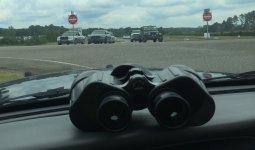 24DE4363-57CD-40B9-A7E5-F893727487D4_1_201_a.jpeg959.7 KB · Views: 34
24DE4363-57CD-40B9-A7E5-F893727487D4_1_201_a.jpeg959.7 KB · Views: 34 -
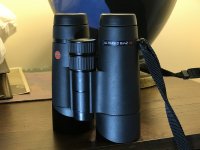 09452DF0-2F07-4520-900D-B5660B853670.jpeg2.2 MB · Views: 32
09452DF0-2F07-4520-900D-B5660B853670.jpeg2.2 MB · Views: 32 -
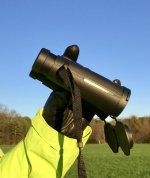 51F647D1-BFC3-4910-B90F-3C2620C9C0A1_1_201_a.jpeg332 KB · Views: 33
51F647D1-BFC3-4910-B90F-3C2620C9C0A1_1_201_a.jpeg332 KB · Views: 33 -
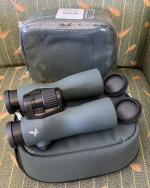 tempImageBr5yjL.png8.8 MB · Views: 32
tempImageBr5yjL.png8.8 MB · Views: 32 -
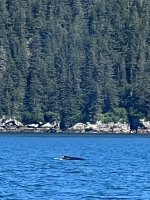 507C3789-9D8A-4C6F-A267-E2D30862AA91_1_201_a.jpeg612.1 KB · Views: 33
507C3789-9D8A-4C6F-A267-E2D30862AA91_1_201_a.jpeg612.1 KB · Views: 33 -
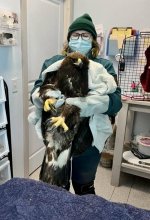 EDF70FFA-4AA8-4C04-A97C-06FE83BE2DD0_1_201_a.jpeg149.2 KB · Views: 28
EDF70FFA-4AA8-4C04-A97C-06FE83BE2DD0_1_201_a.jpeg149.2 KB · Views: 28 -
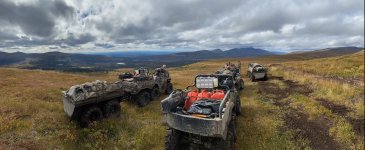 0C4AE03C-A280-4250-97EB-D56FB544D693_1_102_o.jpeg568.7 KB · Views: 28
0C4AE03C-A280-4250-97EB-D56FB544D693_1_102_o.jpeg568.7 KB · Views: 28 -
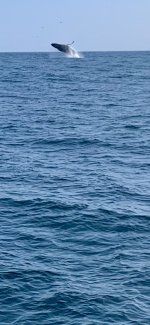 42D4032D-4204-4644-B83B-9FB4F01277F9_1_201_a.jpeg833.2 KB · Views: 25
42D4032D-4204-4644-B83B-9FB4F01277F9_1_201_a.jpeg833.2 KB · Views: 25 -
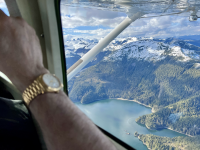 tempImagecWPoKU.png15.1 MB · Views: 23
tempImagecWPoKU.png15.1 MB · Views: 23 -
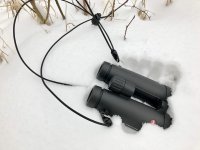 8366AD7A-DB85-4315-A4D6-EFF69219B9B1_1_201_a.jpeg1.7 MB · Views: 34
8366AD7A-DB85-4315-A4D6-EFF69219B9B1_1_201_a.jpeg1.7 MB · Views: 34 -
9AAA2383-390E-4AA3-BA37-BFAADD7366EB.jpeg8.3 MB · Views: 4
Last edited:






